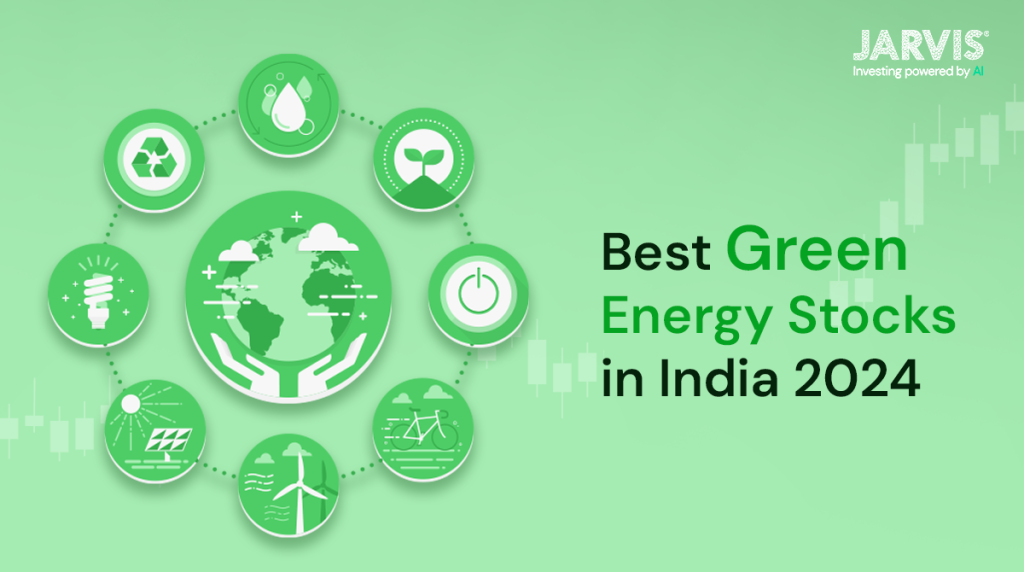The renewable energy sector is one of the most trending sectors in India. Similar to the past few years’ budgets, there will be a focus on the renewable energy stocks this year as well. If you are interested in this sector and planning to invest in green energy stocks, you need to understand it and then study its growth potential. Once you have done it, you will be better placed to take investment calls related to this sector.
What is renewable energy?
We start by understanding the basics – the definition. Renewable energy is energy that comes from sources that are naturally replenished on a human timescale, such as sunlight, wind, rain, tides, waves, and geothermal heat.
Understanding the potential of different pillars of renewable energy
Renewable energy includes hydro, small hydro, solar, wind, and bioenergy. In this section, we will look at the growth potential of each sub-category of renewable energy;
Solar: In the last nine years, solar power capacity in India has risen exponentially. It was 4 GW in March 2015 and increased to 72 GW in September 2023, supported by MNRE.
Wind: With a total installed capacity of 44 GW, India has the fourth largest wind installed capacity in the world (2023). The pace of capacity additions in wind has slowed down in the past few years due to the non-availability of favorable wind sites, policy structure moving away from feed-in-tariff mechanism to competitive bidding, removal of generation-based incentives (GBI), and accelerated depreciation (AD) benefits, among others.
Hydro: India has the fifth-largest installed hydroelectric power capacity in the world. India’s installed utility-scale hydroelectric capacity was 47 GW (2024), accounting for 11% of the country’s total utility power generating capacity.
Small Hydro: The MNRE is in charge of constructing small hydropower projects – projects with a capacity of up to 25MW. As of 2023, the total installed capacity is 4,982 MW, while another 277 MW are under construction.
Bioenergy: Power generation from bioenergy and waste to energy offers good potential in rural areas.
Trends in renewable generation
India is the world’s third-largest energy producer and is the second-largest electricity consumer. While conventional sources (thermal power comprising of coal, lignite, gas, and diesel-based power plants) currently account for 58% of installed capacity, the installed capacity of RES, which accounts for 42%, is 154 expected to contribute equally as the conventional sources in the long term supported by GoI’s ambitious projects and targets.
In FY15, the power generated from renewable sources was 191 BU. In less than a decade, it increased to 366 BU (FY23), which translates to a compounded annual growth rate (CAGR) of 8.5%. The percentage share of renewables also jumped from 17% in FY15 to around 23% in FY23.
In FY15, hydropower was the table topper, with renewable energy generation at 68%. It was followed by wind with a share of 9%. In FY23, there has been a slight change. Though hydro continues to have the largest share, its share decreased from 68% to 44%. Solar is now the second largest, with a share of 28%, followed by wind.
India’s Renewable Energy Targets
India’s installed renewable power capacity as of September 2023 stood at 179 GW, as per the break-up given in the following table.
Top 5 renewable energy companies in India
Here are some of the top renewable energy stocks in India with their market cap:
Disclaimer: Please note that the stocks mentioned above are provided solely for educational purposes. We do not endorse or recommend any of these stocks without thorough independent research
Why should you consider investing in companies from the renewable energy sector?
Here are the top four reasons why you should be digging more into renewable energy:
India’s Ambitious Targets: The government has set ambitious renewable energy targets for the country. The aim is to achieve 500GW of installed renewable energy capacity by 2030. If the numbers are to be achieved, it means that there will be a massive expansion of the sector in the coming years.
Cost Factor: If you compare the costs of solar and wind energy technologies in the last decade, there is a clear and steady decline globally. Compared with traditional fossil fuels, renewable energy has become cost-competitive. The trend is expected to continue across the globe and will make renewable energy even more attractive.
Climate Change Concerns: We have been hearing for years that climate change is likely to hit India more. The government understands that renewable energy will help us reduce dependence on fossil fuels and greenhouse gas emissions and contribute to a cleaner environment.
Technological Improvements: In the last few years, we have seen continuous advancements in renewable energy technologies. As a result, there is increased efficiency and cost reductions. The ongoing innovation will strengthen the sector’s position in India’s energy mix.
Before you go
Without second thoughts, India’s renewable energy sector looks in a sweet spot. However, there are challenges to overcome. Some of the challenges for the sector are:
- Grid integration issues
- Efficient financing mechanisms
- Ensure energy storage solutions.
However, the potential benefits are unquestionable, making it a sector with the potential for significant growth. If you are unsure how to pick stocks for long term from this sector or in general, you can always use technology to help you with investing. Explore Jarvis Invest today and get started with equity investment.
